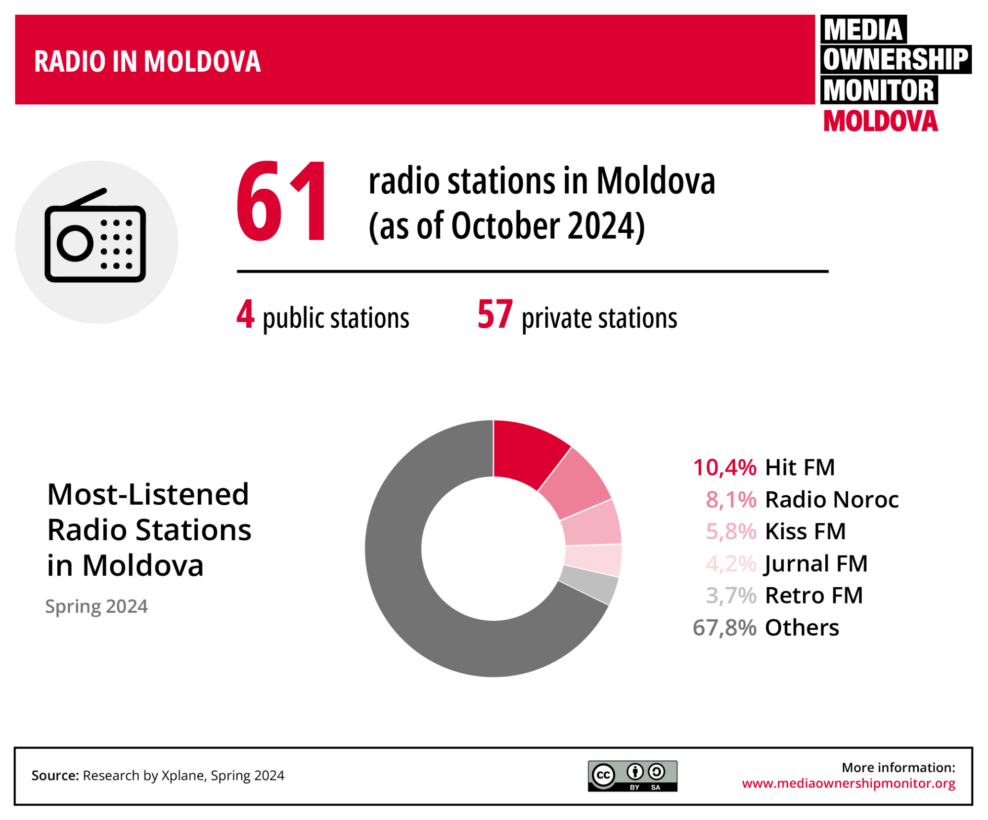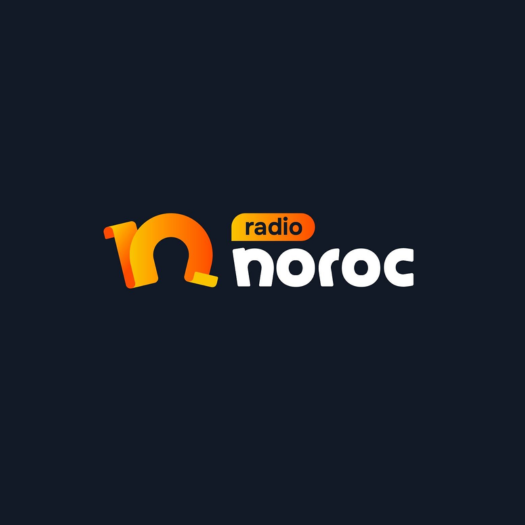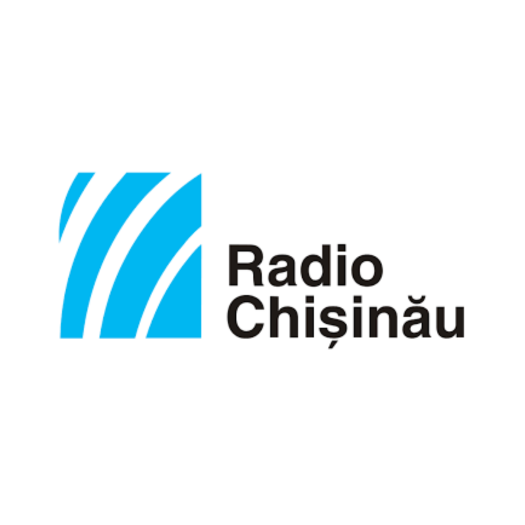Radio
Radio Broadcasting in Moldova's Media Market
Moldova's media landscape encompasses 61 licenced radio stations. According to the International Republican Institute's May-June 2024 survey, radio ranks fifth as an information source amongst the population, after television, social networks, news websites, and information from family and friends.
Four radio stations are public, while the rest are private. The Public Institution "Teleradio-Moldova" Company manages three public radio stations: Radio Moldova, Radio Moldova Muzica, and Radio Moldova Tineret. The Public Company "Gagauziya Radio Televizionu" in the autonomous Gagauz region operates GRT FM. Most private radio stations focus on music and entertainment programming.
The market includes six national stations, nine regional stations, and several local broadcasters. Four stations have had their licences suspended by the Council for Promotion of Investment Projects of National Importance, while two others have licences but haven't started broadcasting.
According to Xplane research conducted in spring 2024, Moldova's most popular radio stations were Hit FM (10.4%), Radio Noroc (8.1%), Kiss FM (5.8%), Jurnal FM (4.2%), and Retro FM (3.7%).
For the Media Ownership Monitor, nine radio stations were selected based on their coverage (national, regional, and local), audience share, and news content. GRT FM was also included because of its importance in the Gagauz autonomous region, despite having a smaller audience.
Monitored stations include:
- Hit FM (private, national, music/entertainment)
- Noroc FM (private, regional, music/entertainment)
- Kiss FM (private, local, music/entertainment)
- Jurnal FM (private, regional, music/entertainment)
- Retro FM (private, local, music/entertainment)
- Radio Plai (private, national, music/entertainment)
- Radio Moldova (public, national, general)
- Radio Chisinau (private, regional, general)
- GRT FM (public, regional)
Brief History of Radio in Moldova
Radio broadcasting in Moldova started in 1930 in Balta, on the left bank of the Dniester River, when the Moldavian Autonomous Soviet Socialist Republic established its radio service. The station functioned primarily as a Soviet propaganda tool. During this period, Bessarabia (the region between the Dniester and Prut rivers) was part of Greater Romania, following the 1918 unification.
Radio Chisinau (also known as Radio Bessarabia) was founded in October 1939 as part of the Romanian Radio Broadcasting Society. It operated for just 300 days before the Soviet occupation of Bessarabia in June 1940. The Soviet army destroyed the building during their temporary retreat a year later.
When the Soviets returned to Bessarabia in September 1944, radio broadcasting resumed, serving as a communist authority mouthpiece. After Moldova gained independence in 1991, Radio Moldova initially remained a state institution before transitioning to public status.
The post-independence period marked the emergence of private radio stations. The first non-state radio station, "Unda Libera," launched in 1993 at Moldova State University's Journalism Faculty. In 1998, Radio "Antena C" began broadcasting as a municipal station managed by Chisinau City Hall. It operated until 2007 when it was privatised and transferred to the then-ruling Communist Party.
Since the 2000s, private radio stations have spread beyond Chisinau to other cities across Moldova.
Several radio stations in Moldova have names and content similar to radio stations from Russia and Romania, but they also produce local content.











